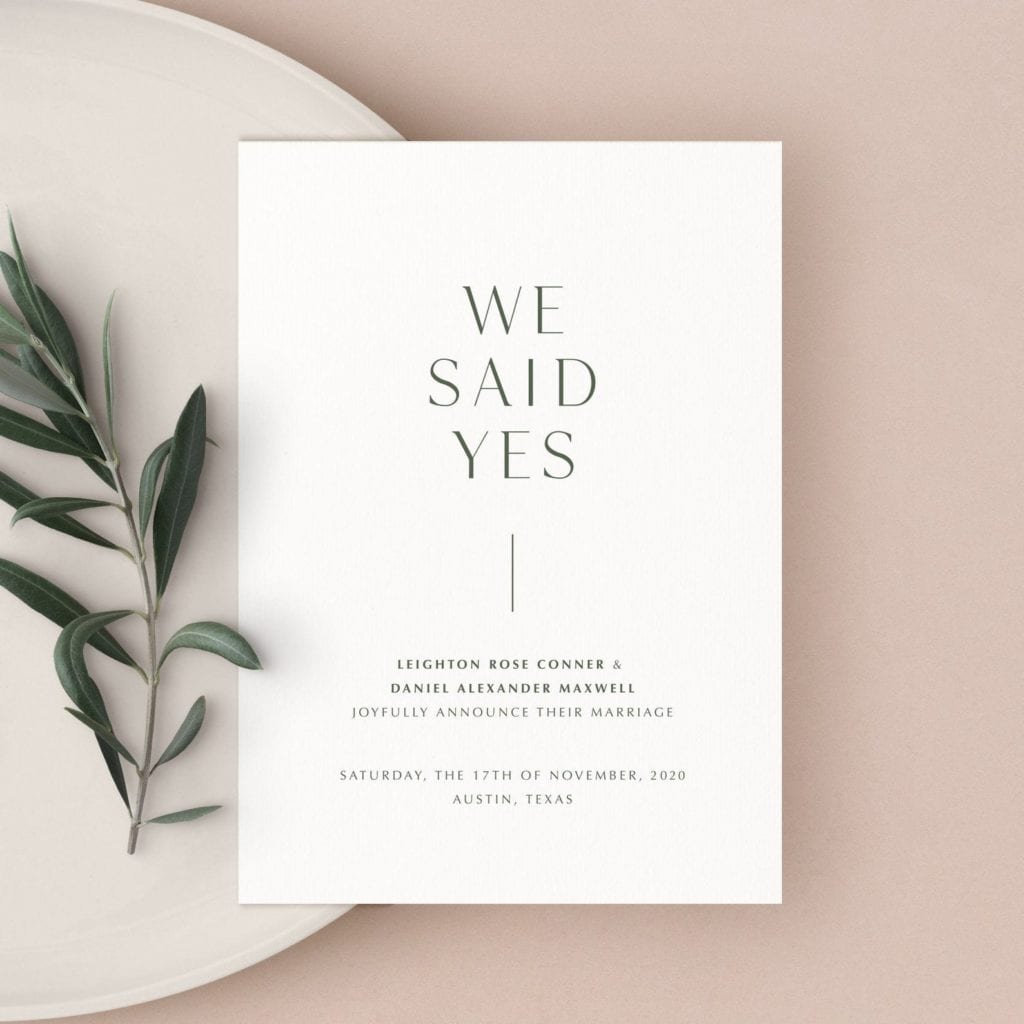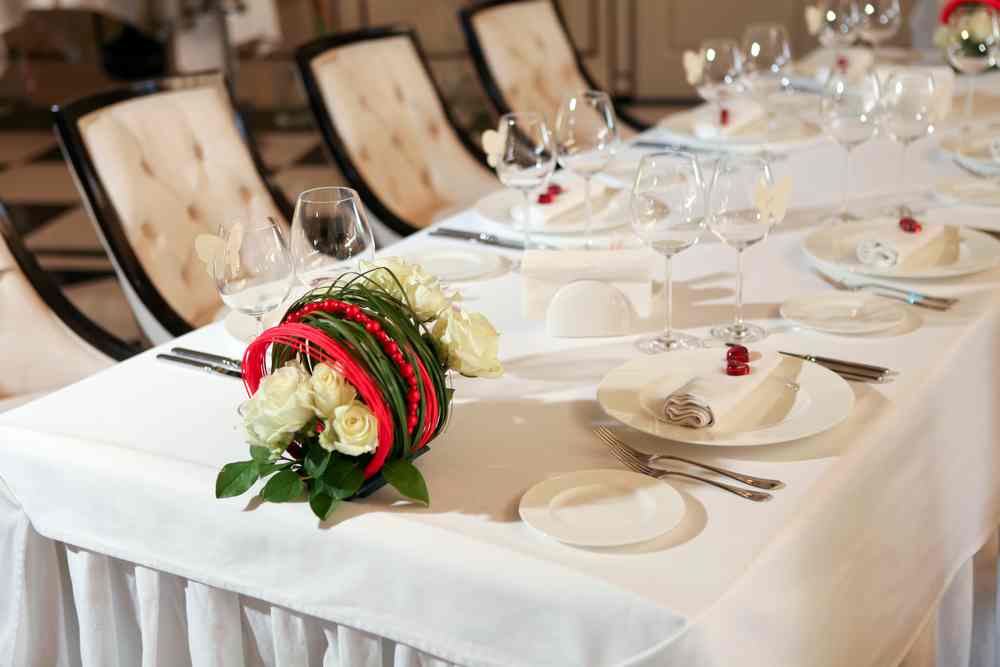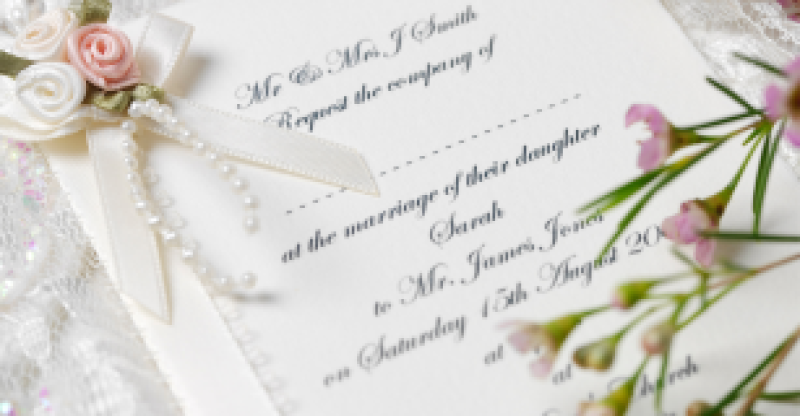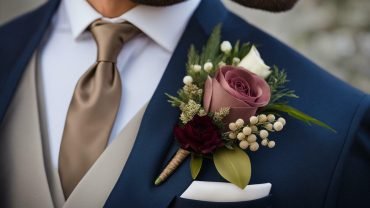Invitation Address Etiquette and Guidelines
Properly addressing wedding invitations is crucial to make guests feel welcome. Different scenarios require different addressing etiquette, such as addressing a married couple versus an unmarried couple. The outer envelope should follow formal etiquette, including the full names and personal titles of the recipients. The inner envelope can be more informal, allowing for some flexibility in addressing options.
Key Takeaways:
- Addressing wedding invitations is an important part of making guests feel welcome.
- Properly address the outer envelope with full names and personal titles.
- Use the inner envelope for more informal addressing options.
- Consider the different scenarios when addressing single guests, families, couples, and guests with distinguished titles.
- Personalize your addressing style to reflect the formality and style of your wedding.
Addressing Wedding Invitations to Single Guests
When it comes to addressing wedding invitations to single guests, there are a few key considerations to keep in mind. The goal is to make each guest feel valued and welcomed, even if they are attending the event alone.
Addressing Invitations to a Single Person
If you are inviting a single guest, it’s important to use their preferred title when addressing the invitation. If you are unsure of their title, it is best to omit it altogether to avoid any potential mistakes or offense. Alternatively, you can use a general title like “Ms.” or “Mr.” if you don’t have specific information.
For invitations that include a guest, it’s best to mention both individuals by name if you have that information. This personal touch shows that you have considered their needs and preferences. However, if you don’t have the names of their guest, simply adding “and Guest” on the inner envelope is perfectly acceptable.
Table: Addressing Wedding Invitations to Single Guests
| Scenario | Addressing |
|---|---|
| Single Guest, Known Title | Mr./Ms. [Full Name] |
| Single Guest, Unknown Title | [Full Name] |
| Single Guest with a Plus-One | [Full Name] and Guest |
Remember, addressing wedding invitations to single guests requires attention to detail and sensitivity to individual preferences. By using their preferred title or omitting titles altogether, you can ensure that each guest feels respected and valued.
Addressing Wedding Invitations to Families
When it comes to addressing wedding invitations to families, it’s important to follow proper etiquette to ensure clarity and inclusivity. By addressing both the outer and inner envelopes correctly, you can convey your invitation with respect and consideration for each family member. Here are some guidelines to help you address wedding invitations to families:
- Outer Envelope: The outer envelope should include the names of the parents or guardians. If the parents are married, you can address them as “Mr. and Mrs. [Last Name].” For unmarried parents, it’s best to list their names separately on separate lines. For example, “Ms. [Mother’s Full Name]” and “Mr. [Father’s Full Name].” This acknowledges each parent’s individual presence and ensures clarity.
- Inner Envelope: The inner envelope is where you can address each family member by name. Start with the parents’ names followed by the names of the children. For example, “Mr. and Mrs. [Last Name]” followed by “Miss [Daughter’s Full Name]” and “Master [Son’s Full Name].” Be sure to list each child’s name if they are invited to the wedding. If children are not invited, it’s best to omit their names to avoid any confusion.
- Addressing Children: If you are inviting children who are 18 or older, it’s recommended to send them their own separate invitation. Address the invitation to each adult child using their preferred title and full name. For example, “Mr. [Full Name]” or “Ms. [Full Name].” Additionally, if adult children are living at home with their parents, you can follow the family format for addressing the invitation. This ensures that each adult child feels individually recognized and included.
By addressing wedding invitations to families with care and attention to detail, you can make each family member feel valued and included in your special day. Remember to double-check the accuracy of names and titles to ensure that everyone receives their invitation in a respectful and personalized manner.
| Outer Envelope | Inner Envelope |
|---|---|
| Mr. and Mrs. [Last Name] | Mr. and Mrs. [Last Name] |
| Ms. [Mother’s Full Name] | [Daughter’s Full Name] |
| Mr. [Father’s Full Name] | [Son’s Full Name] |
Addressing Wedding Invitations to Children 18+
When it comes to addressing wedding invitations to children who are 18 years old or older, it’s important to treat them as individual guests. Each adult child should receive their own invitation, which helps convey that they are being invited as an adult in their own right. This allows them to make their own decision regarding attending the wedding.
When addressing the invitation to an adult child, use the correct titles and identifiers. For unmarried adults, use “Mr.” or “Ms.” followed by their first and last name. If they have a professional or distinguished title, such as a doctor or military personnel, include that as well.
Here’s an example of how to address a wedding invitation to an adult child:
Mr. John Smith
123 Main Street
New York, NY 12345
By addressing the invitation to adult children with the proper titles and treating them as individual guests, you are showing respect for their adulthood and acknowledging their presence at the wedding.
| Title | Address Format for Adult Child |
|---|---|
| Unmarried Adult | Mr./Ms. [First Name] [Last Name] |
| Adult with Professional/Distinguished Title | Dr./Captain [First Name] [Last Name] |
Note: Always use the correct titles and identifiers when addressing wedding invitations to children who are 18 or older. Treating them as individual guests shows respect for their adulthood and allows them to make their own decision about attending the wedding.
Addressing Wedding Invitations to Married Couples
When it comes to addressing wedding invitations to married couples, there are a few key considerations to keep in mind. The proper address format for married couples allows for personalization while still maintaining a sense of formality. Here are some guidelines to follow:
- Use both names: List the full names of both partners on the same line.
- Choose personal titles: You have the option to include personal titles such as “Mr.” and “Mrs.” or simply list the first and last names.
- Consider different last names: If the couple has different last names, it’s best to list the person you are closest with first or go in alphabetical order.
By following these guidelines, you can address wedding invitations to married couples in a way that reflects their unique relationship while still adhering to proper etiquette.
Example:
Mr. John Smith and Mrs. Jane Johnson
| Proper Address Format: | Alternative Format: |
|---|---|
| Mr. John Smith and Mrs. Jane Johnson | John Smith and Jane Johnson |
| Mr. John Smith and Mrs. Jane Johnson-Smith | Jane Johnson-Smith and John Smith |
Remember, the most important thing is to consider the preferences of the couple and choose the format that best represents their relationship. By addressing wedding invitations to married couples thoughtfully, you can set the tone for a memorable and special celebration.
Addressing Wedding Invitations to Unmarried Couples
When it comes to addressing wedding invitations to unmarried couples, there are a few key considerations to keep in mind to ensure you properly acknowledge their relationship. The proper address format for unmarried couples allows for personalization while still maintaining a sense of respect and clarity. Here are some guidelines to follow:
Using Individual Lines for Each Person
When addressing invitations to unmarried couples who live together, it’s best to use separate lines for each person’s name. This allows you to acknowledge both individuals and avoids any assumptions about their relationship status. For example:
Ms. Emily Johnson
Mr. James Smith
This format acknowledges both partners and provides a clear indication that they are both invited to the wedding.
Consider Personal Titles and Preferences
When addressing wedding invitations to unmarried couples, it’s important to consider each individual’s preferences regarding personal titles. Some couples may prefer to use personal titles such as “Ms.” or “Mr.” before their names, while others may prefer a more informal approach. Communication with the couple beforehand can help ensure you address invitations in a way that reflects their preferences and relationship.
Reflecting Personal Styles
Unmarried couples often have unique living arrangements and personal styles, so it’s essential to choose an address format that suits their preferences. Whether they prefer a traditional or modern approach, make sure to select a format that reflects their relationship and makes them feel valued as guests.
By following these guidelines, you can address wedding invitations to unmarried couples in a way that respects their relationship and makes them feel included and welcome. Remember to communicate with the couple if you have any doubts about their preferences, as personalized touches can make a significant impact on their overall experience.
Addressing Wedding Invitations to Guests with Distinguished Titles
When it comes to addressing wedding invitations, it’s important to consider guests with distinguished titles, such as doctors, lawyers, judges, or military personnel. Addressing them correctly shows respect for their professional achievements and is considered proper etiquette. Here are some guidelines to follow when addressing wedding invitations to guests with distinguished titles:
- Include their professional title: When addressing the outer envelope, be sure to include their professional title, such as Dr., Honorable, or Colonel, before their name. This demonstrates respect for their accomplishments and adds a formal touch to the invitation.
- Order of listing: For couples who both have distinguished titles, you have the option to list their names in the order of their professional titles or in alphabetical order. Consider their preferences and choose the order that best suits the couple.
- Use correct identifiers: When addressing a couple with distinguished titles, it’s important to use the appropriate identifiers for each individual. For example, if one person is a doctor and the other is a judge, address the doctor as “Dr.” and the judge as “Honorable.”
By following these guidelines, you can properly address wedding invitations to guests with distinguished titles and show respect for their professional achievements. It’s important to pay attention to detail and use the correct titles and order of listing to ensure a formal and elegant invitation.
| Title | Proper Use |
|---|---|
| Dr. | Addressed to individuals with medical or doctoral degrees |
| Honorable | Addressed to judges, government officials, and politicians |
| Colonel | Addressed to military personnel with the rank of colonel |
Properly addressing wedding invitations to guests with distinguished titles is an important aspect of invitation etiquette. By including their professional titles and using the correct identifiers, you can show respect and add a formal touch to the invitation.
Addressing Wedding Invitations: Tips and FAQs
When it comes to addressing your wedding invitations, there are a few key tips to keep in mind to ensure proper etiquette and a polished presentation. Here are some frequently asked questions and useful tips to guide you:
Q: Should I use abbreviations or spell out names and addresses?
A: It is best to avoid abbreviations and instead spell out the complete names of your guests. This adds a touch of formality and shows attention to detail. For example, instead of using “Mr.” or “Dr.,” write out “Mister” or “Doctor.”
Q: How do I address an invitation to a married couple with different last names?
A: When addressing a married couple with different last names, you have a few options. You can list their names in alphabetical order or choose to list the person you are closest with first. Ultimately, it’s about respecting the couple’s preferences and making them feel included.
Q: Should I use formal titles when addressing invitations?
A: Using formal titles, such as “Mr.,” “Mrs.,” or “Ms.,” is a traditional and respectful way to address your guests. However, if you know that a more informal approach is preferred, you can omit titles altogether. The key is to consider the preferences of your guests and address them accordingly.
Q: Is it necessary to hand-address wedding invitations?
A: While hand-addressing wedding invitations adds a personal touch, it can be time-consuming, especially if you have a large guest list. If you prefer a more efficient option, consider using envelope addressing services or hiring a calligrapher. These services can ensure that addresses are legible and consistent, saving you time and effort.
| Tip | Details |
|---|---|
| Double-check your guest list | Make sure you have the correct and complete names of your guests. Incorrect spellings or missing information can lead to confusion. |
| Consider a sample invitation | Before addressing all your invitations, create a sample to ensure that everything looks perfect. This allows you to make any necessary adjustments or corrections. |
| Use a calligraphy style font | If you opt for envelope addressing services or printing labels, choose a calligraphy-style font that enhances the overall elegance of your invitations. |
“Properly addressing your wedding invitations not only shows respect and attention to detail, but it also sets the tone for your special day. Take the time to follow these tips and address each invitation with care, creating a meaningful and memorable experience for your guests.”
Hiring a Calligrapher or Using Envelope Addressing Services
When it comes to addressing your wedding invitation envelopes, you have a couple of options to ensure that they look beautiful and professional. One option is to hire a calligrapher, who can use their artistic skills to create elegant and personalized handwritten addresses. Calligraphers can bring a unique and luxurious touch to your invitations, making them stand out and creating a lasting impression on your guests.
If you prefer a more streamlined and efficient approach, you can also consider using envelope addressing services. These services utilize advanced printing techniques to accurately and legibly print addresses directly onto the envelopes. This option saves you time and effort, ensuring that each address is clear and consistent throughout your invitation suite.
Choosing between hiring a calligrapher or using envelope addressing services depends on your budget, timeline, and personal preferences. If you have the budget for it and appreciate the artistry of handwritten calligraphy, a calligrapher can provide a unique and personalized touch to your invitations. On the other hand, if you’re looking for a convenient and efficient option, envelope addressing services can ensure that your addresses are uniform and professional while saving you time.
| Benefits of Hiring a Calligrapher | Benefits of Using Envelope Addressing Services |
|---|---|
|
|
Ultimately, the choice between hiring a calligrapher or using envelope addressing services comes down to your personal preferences and priorities. Whichever option you choose, ensure that your wedding invitations reflect the style and formality of your special day, making a memorable first impression on your guests.
Formal Wedding Invitation Addressing Etiquette Guide
When it comes to formal wedding invitation addressing, following proper etiquette is essential to create a sense of elegance and respect. From using appropriate titles to spelling out names and addresses, each detail contributes to the overall formality of the invitation. Here are some key guidelines to consider:
Use Proper Titles
Addressing guests with their correct titles helps convey a sense of respect and formality. For married couples, use the titles “Mr.” and “Mrs.” followed by their last name. If the couple has different last names, you can use “Mr.” and “Mrs.” followed by the name of the person you are closest to or list their names alphabetically. For unmarried guests, use “Miss” for young women and “Mr.” for young men. Use “Ms.” for unmarried women or if their marital status is unknown.
Spell Out Names and Addresses
When addressing wedding invitations, it’s important to spell out names and addresses in their entirety. Avoid using abbreviations or initials, as this can detract from the formal aesthetic. Write out the full names of the recipients and include complete and properly formatted addresses, including fully spelled out street names, state names, and zip codes.
Consider Guest Preferences
While formal wedding invitation addressing requires adherence to certain rules, it’s also essential to consider the preferences of your guests. Some individuals may prefer less formal address formats, such as omitting personal titles or using first names. If you are familiar with the recipient’s preferences, you can adjust the addressing style accordingly to strike a balance between formality and personalization.
| Recipient | Proper Addressing Format |
|---|---|
| Married Couple with the Same Last Name | Mr. and Mrs. [Last Name] |
| Married Couple with Different Last Names | Mr. [Last Name] and Mrs. [Last Name], or [Last Name] and [Last Name] |
| Unmarried Woman | Miss [Full Name] or Ms. [Full Name] |
| Unmarried Man | Mr. [Full Name] |
Remember, formal wedding invitation addressing is all about creating a sense of elegance and respect. By following the proper etiquette guidelines, you can ensure that your invitations set the tone for a sophisticated and memorable event.
Modern Wedding Invitation Addressing Etiquette
When it comes to modern wedding invitation addressing etiquette, couples today have more flexibility to personalize their invitations and reflect their unique style and relationship. While traditional etiquette guidelines still provide a solid foundation, contemporary address formats offer a fresh and creative approach. Here are some key aspects to consider:
1. First Names
In modern addressing etiquette, it’s common to use first names instead of formal titles. This allows for a more casual and intimate tone. For example, instead of using “Mr. and Mrs. Smith,” you can address the envelope as “Sarah and John Smith.” It’s important to note that this style is better suited for close friends and family members rather than more formal or professional relationships.
2. Informal Address Formats
Modern addressing etiquette also embraces more informal address formats. Instead of the traditional inner and outer envelopes, many couples today opt for a single envelope. The names of the recipients can be printed directly on the envelope or incorporated into the design of the invitation itself. This streamlined approach saves time and resources while still maintaining a stylish and contemporary look.
3. Customized Designs
Contemporary address formats allow couples to get creative with their wedding invitations. From unique font choices to playful illustrations, there are endless possibilities to showcase your style and personality. Consider incorporating elements that reflect your wedding theme or personal interests. This customization adds a personal touch and makes your invitations truly one-of-a-kind.
In conclusion, modern wedding invitation addressing etiquette offers couples the opportunity to express their individuality while still respecting certain traditional guidelines. By using first names, embracing informal address formats, and customizing designs, you can create wedding invitations that perfectly reflect your unique love story.
Conclusion
In conclusion, understanding and applying proper invitation addressing etiquette is essential to ensure that your wedding invitations are received with warmth and respect. By following the guidelines for addressing invitations to single guests, families, married couples, unmarried couples, and guests with distinguished titles, you can create thoughtful and personalized invitation envelopes.
Remember to use the correct titles and include the full names of your guests, avoiding abbreviations whenever possible. It’s also crucial to consider individual preferences and relationship dynamics when addressing invitations, whether you opt for a formal or modern approach.
If you’re unsure about the correct way to address an invitation, it’s best to err on the side of formality. And, if you’re looking to add an extra touch of elegance, you can consider hiring a calligrapher or using envelope addressing services to ensure legible and aesthetically pleasing envelopes.
In summary, addressing wedding invitations is an art that combines tradition, respect, and personalization. By mastering the etiquette, you can create invitation envelopes that reflect the style and formality of your wedding, making your guests feel honored and excited to celebrate your special day.
FAQ
What should I consider when addressing wedding invitations to single guests?
When addressing wedding invitations to single guests, it’s important to use their preferred title. If unsure of their title, it’s best to omit it altogether. For invitations with a guest included, it’s best to mention both people by name if you have that information. If not, simply adding “and Guest” on the inner envelope is sufficient.
How should I address wedding invitations to families with children?
When addressing wedding invitations to families with children under 18, the outer envelope should include the names of the parents or guardians. The inner envelope should list each child by name. It’s important to include each child’s name if they are invited to the wedding. Not including their names may imply that children are not invited, so it’s essential to communicate this clearly.
How should I address wedding invitations to children who are 18 or older?
If you are inviting a family that includes children who are 18 or older, each adult child should receive their own invitation. It’s important to use the correct identifiers when addressing the invitation, such as “Ms.” or “Mr.” for unmarried adults. If adult children are living at home with their parents, you can follow the family format for addressing the invitation.
What is the proper way to address wedding invitations to married couples?
When addressing wedding invitations to married couples, you can list their names on the same line. You have the option to use personal titles or simply list their first and last names. If the couple has different last names, it’s recommended to list the person you are closest with first or go in alphabetical order. Feel free to choose the format that best suits the couple’s preferences.
How should I address wedding invitations to unmarried couples living together?
When addressing wedding invitations to unmarried couples living together, each person’s name should be on a separate line. You can use personal titles or omit them according to the couple’s preferences. It’s important to consider the individual preferences of each person and choose the format that best represents their relationship.
How should I address wedding invitations to guests with distinguished titles?
If a guest has a distinguished title, such as a doctor, lawyer, judge, or military personnel, it’s proper etiquette to address them by their title on the wedding invitation envelope. When addressing a couple with distinguished titles, you can list the guest with the professional title first or list their names in alphabetical order. It’s essential to use the correct titles and show respect for their professional achievements.
What are some general tips for addressing wedding invitations?
When addressing wedding invitations, it’s important to follow some basic rules of thumb. Always use the complete, formal name of your guest and avoid using initials or abbreviations. Spell out proper nouns, such as state names and street titles. If you’re unsure about the proper way to address an invitation, it’s best to go with the most formal option.
Should I hire a calligrapher or use envelope addressing services for my wedding invitations?
When it comes to addressing wedding invitation envelopes, you have the option to hire a calligrapher or use envelope addressing services. Hiring a calligrapher can add a personalized and elegant touch to your invitations. Alternatively, envelope addressing services can save time and ensure that addresses are legible and consistent. Consider your budget and preferences when deciding which option is best for you.
What is the proper etiquette for formal wedding invitation addressing?
Formal wedding invitation addressing requires following certain etiquette guidelines. This includes using proper titles, spelling out names and addresses, and considering the preferences of the guests. Whether you’re addressing envelopes for a black-tie event or a casual wedding, maintaining a sense of formality and respect is essential.
How can I address wedding invitations in a more modern and personalized way?
Modern wedding invitation addressing may deviate from traditional etiquette rules. Couples today have the freedom to personalize their invitations and address envelopes in a way that reflects their relationship. This may include using first names, omitting personal titles, or choosing more informal formats. The key is to capture the essence of the couple’s style while still ensuring clarity and respect.
What is the significance of properly addressing wedding invitations?
Properly addressing wedding invitations plays a significant role in setting the tone for the event and making guests feel welcome. By following the appropriate etiquette guidelines and considering the preferences of the recipients, you can create beautiful and personalized invitation envelopes that reflect the style and formality of your wedding.







